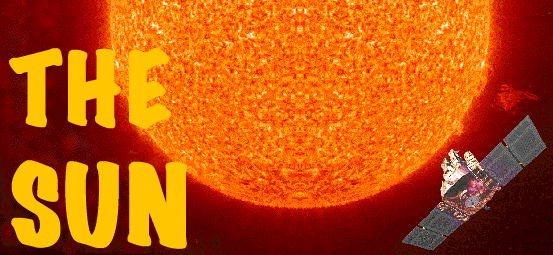Solar Tornadoes As Wide As The Earth
 The European Space Agency's SOHO spacecraft has seen vast tornadoes on the Sun. Each of the mammoth solar storms is nearly as wide as the diameter of our planet Earth and gusting at up to 300,000 mph.
The European Space Agency's SOHO spacecraft has seen vast tornadoes on the Sun. Each of the mammoth solar storms is nearly as wide as the diameter of our planet Earth and gusting at up to 300,000 mph.
SOHO, the Solar and Heliospheric Observatory, was lofted on December 2, 1995, to an orbit 900,000 miles away from Earth by a U.S. National Aeronautics and Space Administration (NASA) rocket. It began scientific operations in April 1996, using twelve European and American instruments to keep a close watch on the Sun.
During its first two years in service, the satellite detected a dozen tornadoes whipping across the surface of the Sun. Most were near the Sun's north and south poles at the time. Knowing about the tornadoes helps scientists understand the impact of the solar wind that buffets Earth, causing auroras and magnetic storms and endangering satellites in space and power supplies on Earth.
The hot gas in the tornadoes spirals away from the Sun and gathers speed. These spectacular events in the Sun's atmosphere can have widespread effects on Earth. For instance, solar storms during the last period of peak sunspots, in 1989-91, caused power failures in Canada and Sweden, made some computers crash in the United States, and destroyed or damaged several satellites.
Mission Extended. ESA and NASA decided in April 1998 to extend SOHO's mission five more years to the year 2003. That lets SOHO observe dark sunspots on the Sun's surface. Sunspots are expected to peak around the year 2000.
| Sun and Sunspots Index Page | |||||
|---|---|---|---|---|---|
| Learn More about Our Sun and Sunspots and Their Effects on Earth |
| Read more Space Today Online stories about the Solar System | |||||
|---|---|---|---|---|---|
| Star: | The Sun | ||||
| Inner Planets: | Mercury | Venus | Earth | Mars | |
| Outer Planets: | Jupiter | Saturn | Uranus | Neptune | Pluto |
| Other Bodies: | Moons | Asteroids | Comets | ||
| Beyond: | Pioneers | Voyagers | |||
| Top of this page | Solar System index | Space Today Online cover |